At STH, we already did a deep dive into the Facebook Yosemite V3 solution. This is the 3rd Generation Intel Xeon Scalable “Cooper Lake” generation server that is the successor to the Xeon D (Broadwell-DE and Skylake-D) servers that Facebook uses. We even found the new Intel Xeon Platinum 8321HC 26C 88W TDP CPU (3.38W/ core!) that is custom-built for these nodes. One aspect that we did not get into in as much depth is the storage side. Here, the company is using 25mm E1.S EDSFF drives to provide high-performance storage to its Yosemite V3 nodes.
Facebook Leveraging EDSFF E1.S 25mm in Yosemite V3
Facebook showed a really interesting chart that shows how as drives get larger, the amount of power per TB of storage goes down. It also is giving us a glimpse into storage-class memory running in the 18-25W range. 25W is outside of what current-gen Intel Optane PMem 200 DIMMs currently run at.
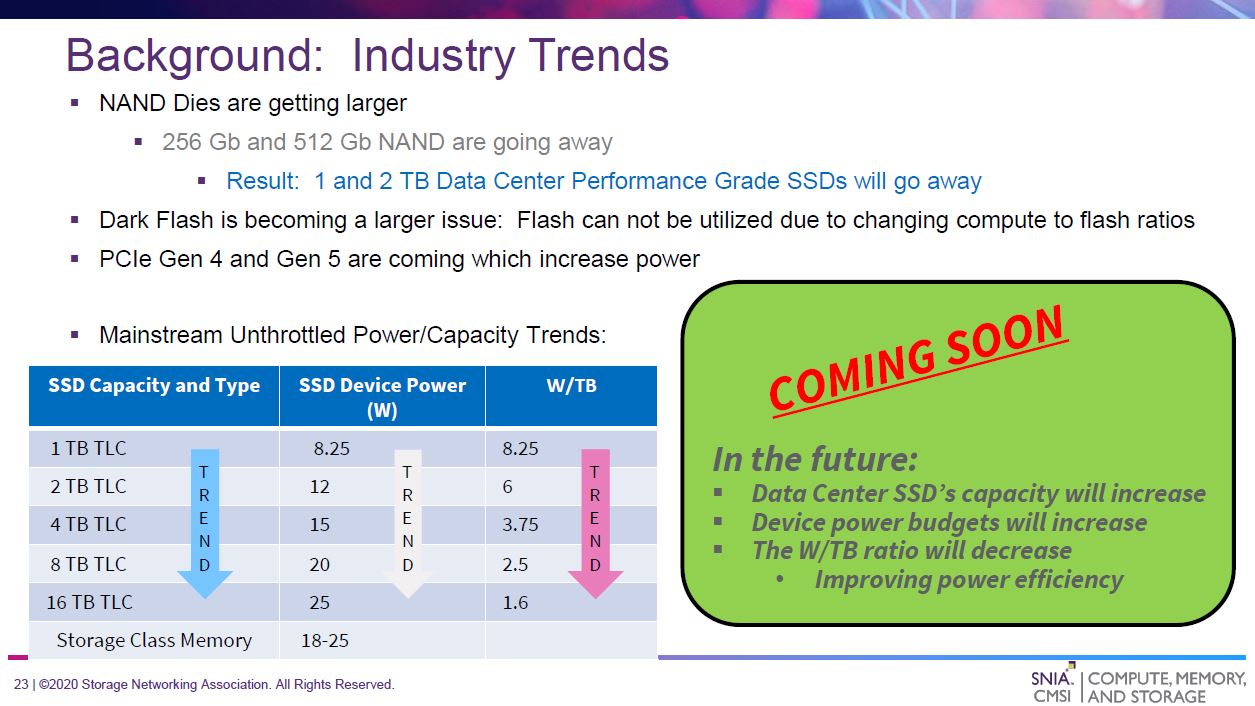
Facebook is showing how it is using the asymmetric E1.S 25mm form factor in Yosemite V3.
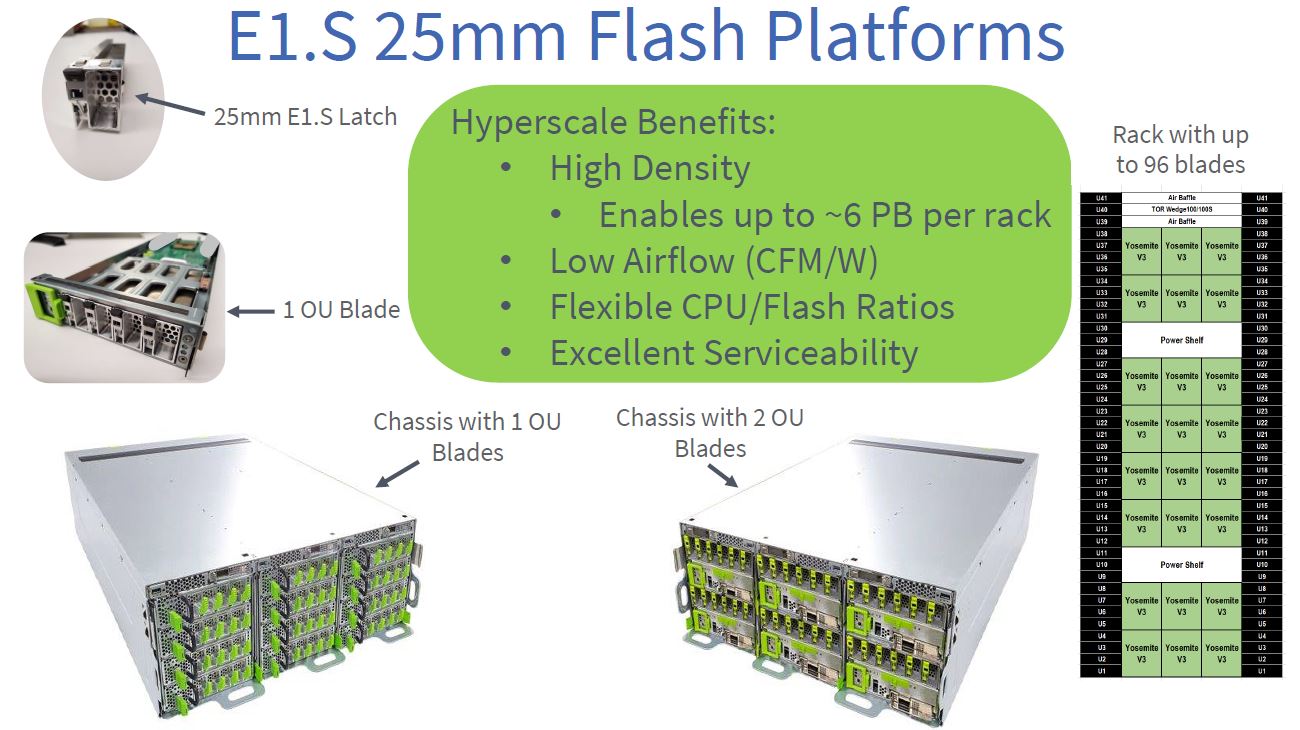
Specifically, using the form factor it can fit up to 4x E1.S 25mm SSDs per blade in 1OU blades and up to six in 2OU blades. OU is the OCP rack unit for those who are not familiar with the term. Also interesting here is that Facebook is highlighting SCM support in its platform.
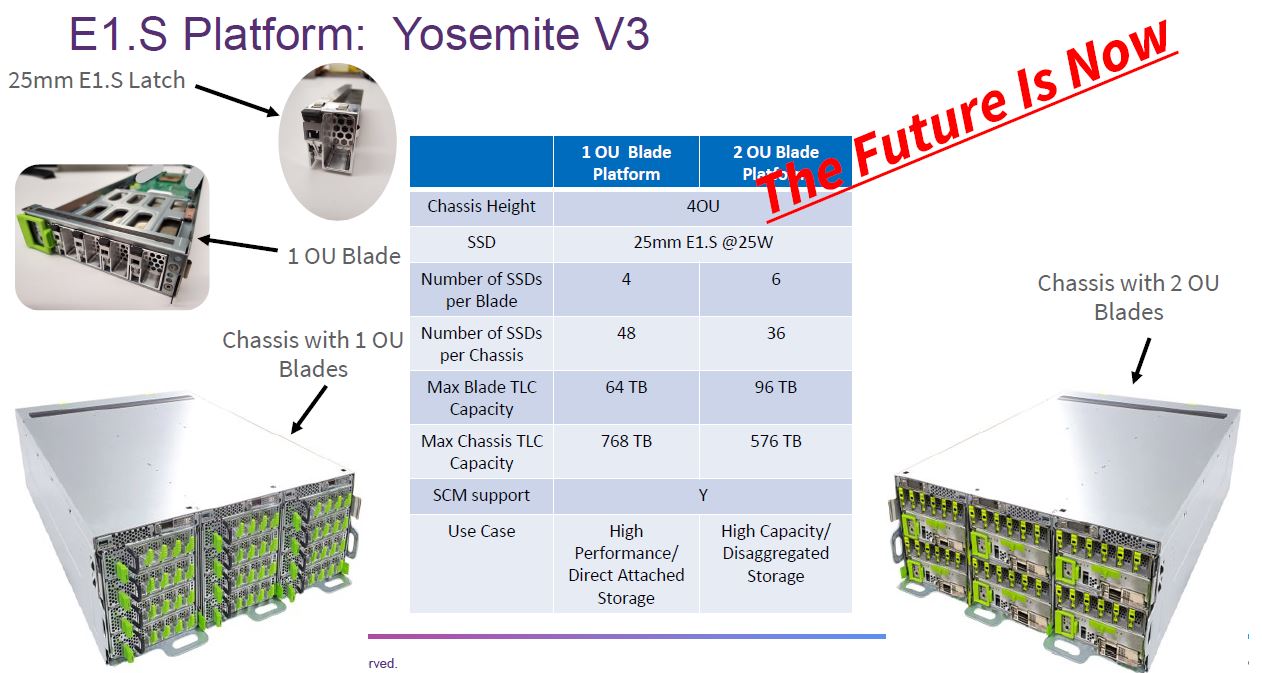
In terms of why this is important, Facebook is also highlighting the thermal performance. Here Facebook is again calling out SCM but at a 20-25W range on the scale. It is saying that with the higher TDP limits of E1.S 25mm Yosemite V3 is able to accommodate higher capacity drives.
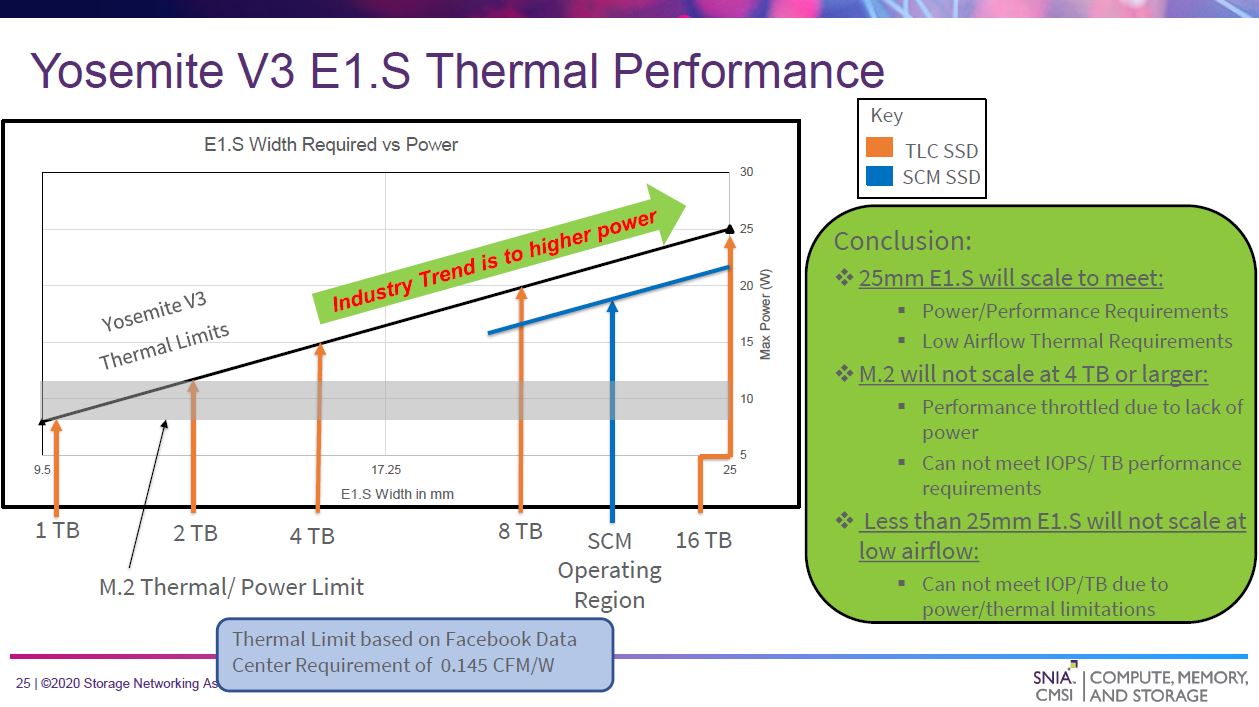
Facebook is open about its hardware requirements so we find that the Facebook Data Center Requirement for drives is 0.145 CFM/W.
Final Words
EDSFF is going to be a major trend in the industry soon. As with Facebook (and Microsoft), the rest of the industry is going to transition to the new EDSFF standard over the next few years. It is great to see Facebook showing why the form factor is needed and the impact it has.
If you want to learn more about the Yosemite V3 platform, we also have a video here:
Also if you want to learn more about the next-gen form factors, you can check out our video here:

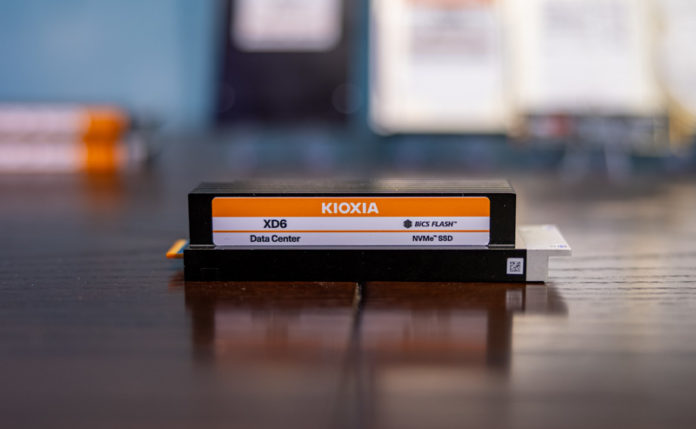


Where was this info presented? Is the slide deck available somewhere? Thanks!